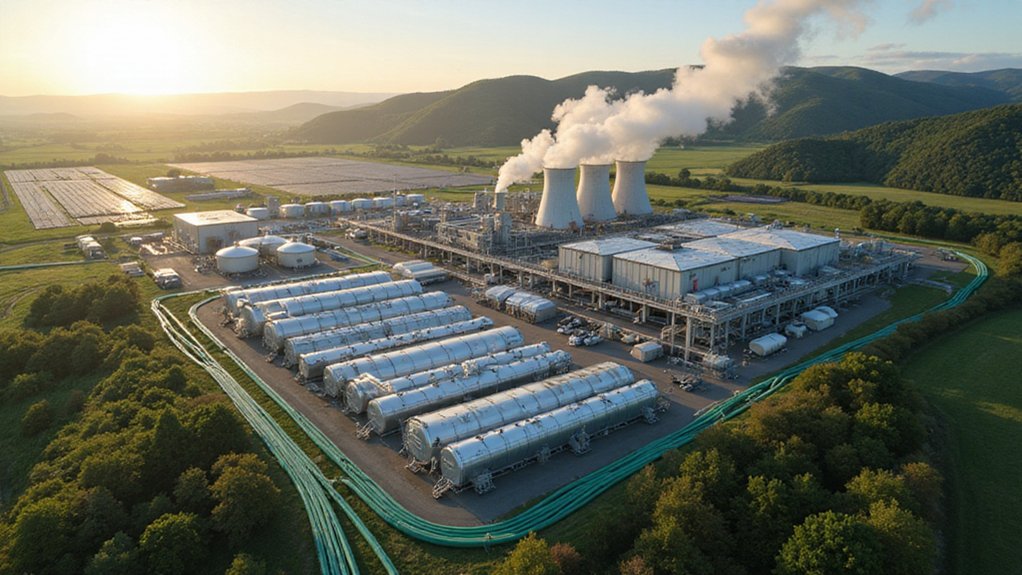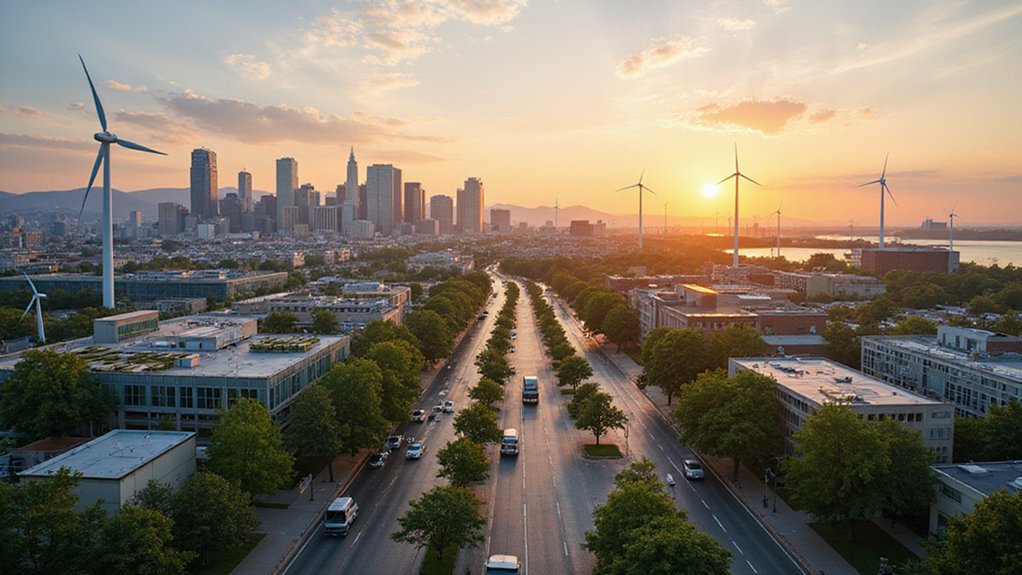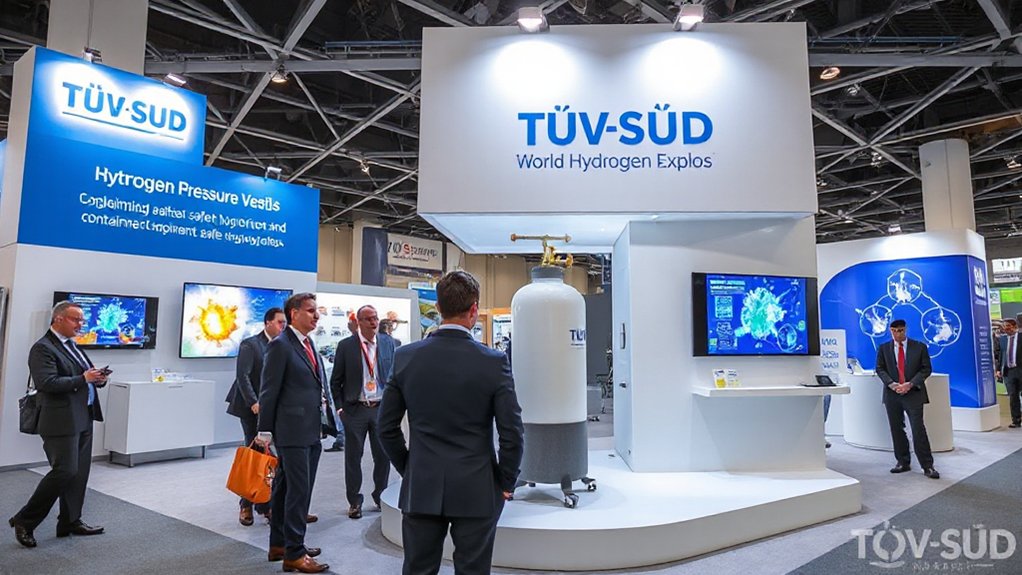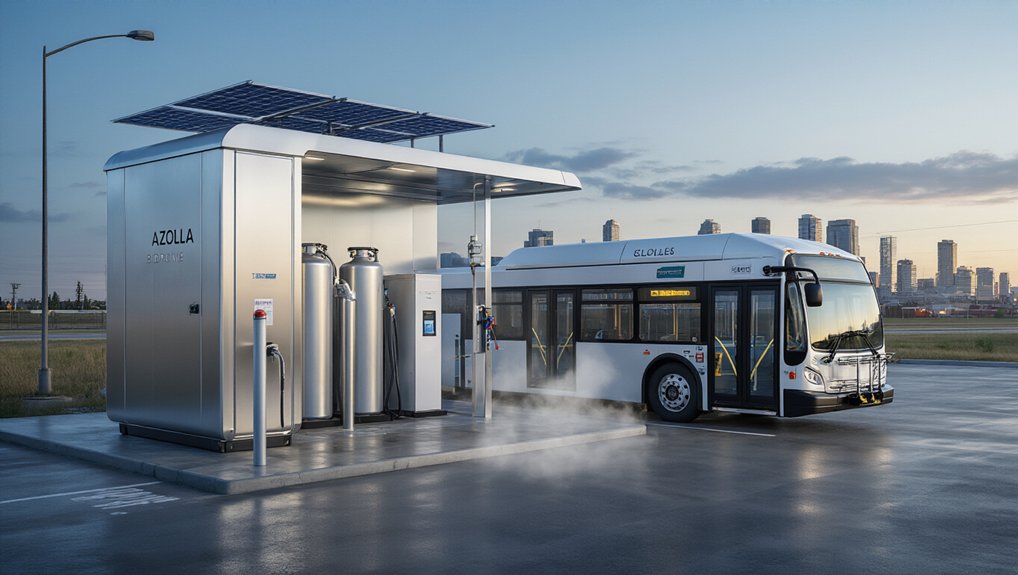France’s hydrogen strategy isn’t $92 billion – it’s €9 billion. Still massive. They’re pragmatically combining nuclear and renewable power to produce 1.1 million tons of carbon-free hydrogen annually by 2030. Current capacity? A mere 35 MW, with 315 MW in development. The government’s backing 150+ projects since 2020, including 19 research initiatives and 35 demonstrators. Their revised 4.5 GW target seems more realistic than previous dreams. The details reveal why energy markets are watching.
While other European nations scramble to find their path to a greener future, France is sitting on what might be a hydrogen goldmine. With a national strategy backed by €9 billion in funding through 2030, the French are betting big on hydrogen as their ticket to energy independence and industrial prowess. Not that they’re hitting all their targets. They’ve already downgraded their electrolysis capacity goals from 6.5 GW to a more modest 4.5 GW by 2030, but hey, who’s counting?
The numbers still impress. France aims to produce 1.1 million tons of carbon-free hydrogen annually by 2030. Current capacity sits at a measly 35 MW, with projects totaling 315 MW in various stages of development. Baby steps, but they’re moving.
France’s hydrogen ambitions: impressive on paper, tiny in reality. From 35 MW to 1.1 million tons—ambitious leaps for a patient nation.
What makes France’s approach interesting isn’t just the billions they’re throwing at the problem. It’s their pragmatism. Unlike some green purists, France embraces both renewable and nuclear-powered hydrogen production. Nuclear power for hydrogen? Sacrebleu! But it works for them.
The government has already supported over 150 hydrogen projects since launching their strategy in 2020. They’ve allocated €4 billion specifically for commercial and industrial deployment. This financial commitment includes a €4bn subsidy package for low-carbon hydrogen producers to accelerate commercialization and market growth. More cash is flowing into research—€83 million for 19 priority research projects and another €350 million for 35 demonstrator projects. Not chump change.
Infrastructure is growing too. New hydrogen refueling stations are popping up in cities like Belfort and Dijon, with on-site production capabilities. Gigafactories for hydrogen equipment are expanding. The production will be distributed across 15 to 25 sites per region throughout France, ensuring widespread availability.
The economic impact could be substantial. Jobs, industrial growth, reduced emissions, less energy dependence—the whole package. France is using hydrogen to tackle its highest-emission sectors first, which is smart. Boring, but smart. Unlike intermittent renewables, hydrogen production facilities could achieve high availability similar to geothermal energy’s 95% availability factor.
Will France’s hydrogen ambitions “shatter global energy markets” as promised? Probably not overnight. Their revised targets acknowledge the reality of slower-than-expected deployment. But they’re playing the long game, and in energy, patience pays dividends.
References
- https://www.statista.com/statistics/1357099/forecast-regional-hydrogen-production-volume-france/
- https://www.france-hydrogene.org/app/uploads/sites/4/2023/10/France-Hydrogene_National-Hydrogen-Strategy_EN.pdf
- https://www.enerdata.net/publications/daily-energy-news/france-lowers-hydrogen-production-targets-45-gw-2030.html
- https://www.france-hydrogene.org/en/publication-of-france-hydrogenes-annual-review-on-hydrogen-deployment-in-france-for-2024/
- https://strategicenergy.eu/france-hydrogen/








